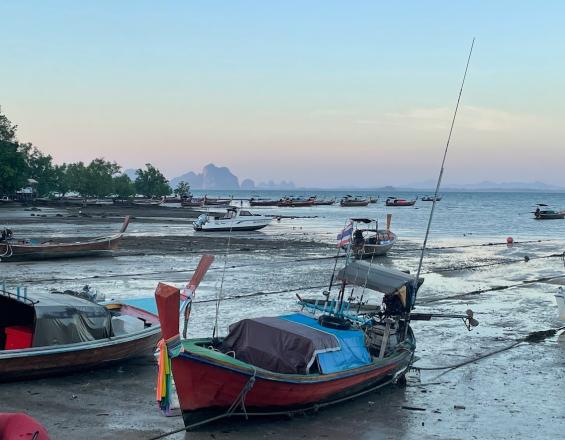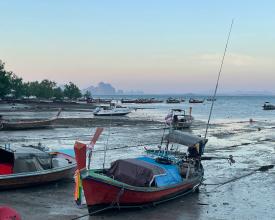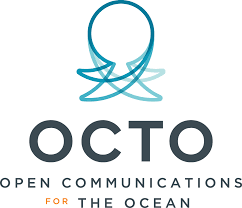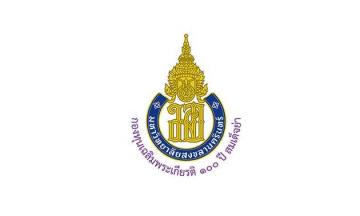
Ecoturismo en el paisaje marino de Hat Chao Mai - Ko Libong: cómo beneficia a las personas y a la naturaleza

El desarrollo del ecoturismo en la provincia tailandesa de Trang se ha visto impulsado por una combinación de políticas gubernamentales, redes sociales virales y espíritu empresarial local. Las medidas de conservación iniciadas por el Gobierno para proteger especies amenazadas, sobre todo dugongos, y ecosistemas como las praderas marinas, empezaron por prohibir las prácticas pesqueras destructivas. Esto provocó inicialmente conflictos sociales entre los pescadores locales, pero el gobierno y los grupos comunitarios colaboraron para hacer cumplir estas políticas y encontrar soluciones.
El punto de inflexión llegó cuando una cría de dugongo llamada Mariam, rescatada por el Departamento de Recursos Marinos y Costeros, acaparó la atención de las redes sociales. El vídeo viral de Mariam despertó el interés del público por visitar la costa andamán de Trang, lo que provocó un aumento del turismo.
Además, los grupos de conservación de la comunidad ayudaron a concienciar sobre la protección del medio ambiente, implicando a lugareños y turistas en actividades de conservación y promoviendo prácticas turísticas sostenibles.
Contexto
Défis à relever
Hace treinta años, las prácticas pesqueras destructivas agotaron los recursos naturales marinos, incluidas las praderas marinas, que son la principal fuente de alimento de los dugongos. Las praderas marinas tampoco se han recuperado del todo debido a la dispersión de sedimentos por las actividades de dragado de canales, las prácticas pesqueras insostenibles, entre otros factores, y la extrema fluctuación del clima en la región.
Actualmente, sigue habiendo muchos incidentes de muerte o lesiones en la población de dugongos, debido a las hélices de los barcos, las redes de pesca o las colisiones con embarcaciones u otros objetos duros.
Ubicación
Procesar
Resumen del proceso
El ecoturismo en la provincia de Trang se desarrolló en un contexto que permitió el crecimiento de la iniciativa empresarial en el sector. En primer lugar, la voluntad política del gobierno de preservar los recursos naturales, en particular los dugongos y las praderas marinas, se tradujo en una nueva política de gestión que prohibía las prácticas destructivas. Los grupos de pescadores comunitarios se implicaron para apoyar a las autoridades en la aplicación de la ley. Luego, la cría de dugongo rescatada, Mariam, dio que hablar en las redes sociales, cuyo vídeo se hizo viral en el país. Despertó la atención y el interés del público en general por el dugongo, pero más en general por la hermosa costa de Andamán. Muchos tailandeses y extranjeros empezaron a visitar la provincia. El aumento del número de visitantes en la zona ofreció nuevas oportunidades de negocio, en particular la creación de complejos turísticos y casas de familia, que proporcionaron ingresos adicionales a la población local. Al mismo tiempo, los grupos comunitarios de conservación se agruparon en torno a una especie emblemática (por ejemplo, el dugongo) o un ecosistema (por ejemplo, las praderas marinas) y contribuyeron enormemente a sensibilizar a las comunidades locales y a los visitantes, así como a las actividades de conservación.
Bloques de construcción
Política de gestión actualizada
El gobierno decidió actuar para evitar una mayor destrucción de los recursos naturales. Se creó y aplicó una nueva política de gestión que prohibía las prácticas pesqueras destructivas, como la pesca de arrastre en los fondos marinos y las artes de pesca nocivas en las zonas costeras y de alta mar.
En aquel momento, afectó negativamente a los pescadores locales, lo que generó conflictos sociales. La Asociación de Pescadores local y el Gobierno trataron de encontrar soluciones para mitigar los efectos en los medios de subsistencia de ciertos grupos de pescadores. Al mismo tiempo, colaboraron con las autoridades en la aplicación de la ley.
Desarrollo del ecoturismo
Las oportunidades de desarrollo turístico se materializaron gracias a Mariam, la cría de dugongo rescatada. Nativos de la provincia de Trang, formados y empleados en la industria turística en otros lugares del país, regresaron a su pueblo natal para abrir y gestionar un alojamiento en familia. Trabajan con sus parientes en los pueblos para ofrecer servicios a sus huéspedes. Estos pequeños negocios familiares han generado ingresos alternativos para los miembros de la comunidad local y han ayudado a mitigar los conflictos relacionados con la prohibición de artes y prácticas de pesca destructivas.
Factores facilitadores
Mariam, una cría huérfana de dugongo, fue llevada al Departamento de Recursos Marinos y Costeros, donde se ocuparon de ella. En ese momento, el Departamento promulgó una nueva política para conservar y proteger a los dugongos. Un vídeo de Mariam se publicó en las redes sociales y se hizo viral. La gente la encontraba tan mona que quería venir a visitarla y, en general, conocer la costa de Andamán. Esta región costera de Tailandia se convirtió en un importante destino turístico.
Grupos comunitarios de conservación activos
A raíz de la nueva política de gestión aplicada por el gobierno, muchas asociaciones y grupos comunitarios se organizaron y empezaron a participar activamente en la concienciación de sus comunidades y en la realización de actividades de conservación. Estos grupos se dedican a la ciencia ciudadana, la recogida de datos de varias generaciones, la limpieza de playas, la replantación de praderas marinas, la recogida de residuos plásticos y el reciclaje.
Impactos
- Aumento de la población de dugongos
- Cohesión social y grupos de conservación activos
- Ingresos adicionales para la población local
- Sensibilización del público en general sobre el dugongo y su conservación en la provincia de Trang
Beneficiarios
Propietarios de casas de familia y sus familiares
Objetivos de Desarrollo Sostenible
Historia
Thip-Usa Saengsawang, natural de Koh Libong, provincia de Trang, recuerda la comunidad musulmana costera y la abundancia de vida marina que definían su isla natal en el mar de Andamán. En su juventud, el mar que rodeaba Koh Libong era rico en pastos marinos, lo que atraía a cientos de dugongos, algo habitual en aquella época. Sin embargo, con el paso de las décadas, la degradación ambiental y el impacto del turismo han mermado los recursos naturales y la vida salvaje de la isla, incluidos los antaño abundantes dugongos.
Hace diez años, los lugareños, inspirados por los equipos de investigación, formaron el Grupo Voluntario de Vigilancia del Dugongo para conservar la vida marina de la isla. Aprendieron métodos de investigación y empezaron a vigilar regularmente la salud de las praderas marinas, esenciales para la supervivencia de los dugongos, y pusieron en marcha iniciativas para promover el turismo sostenible. Una de las principales actividades del grupo es vigilar las praderas marinas antes y después de la temporada turística para analizar el impacto ambiental y abogar por un turismo responsable.
Con una mayor concienciación sobre la conservación marina, la comunidad desempeña ahora un papel activo en la protección de la biodiversidad de la isla. Los voluntarios, especialmente los jóvenes, reciben formación sobre el ecosistema de pastos marinos y su importancia. Con los años, el grupo también ha ampliado su red, colaborando con pueblos cercanos y organizaciones de investigación para reforzar sus esfuerzos de conservación.
Entre los últimos acontecimientos positivos cabe citar la eclosión de 77 tortugas marinas verdes en la isla tras una larga ausencia, así como la aprobación de una política gubernamental de conservación costera y marina en la provincia. Thip-Usa subraya que la labor de conservación requiere un esfuerzo unificado en el que participen las comunidades locales, los investigadores y el gobierno. Espera que los esfuerzos por proteger los recursos marinos sigan siendo constantes y no se desvanezcan con el paso del interés público.
Fuente: https://ngthai.com/environment/34298/kolibongvolunteerwork/



